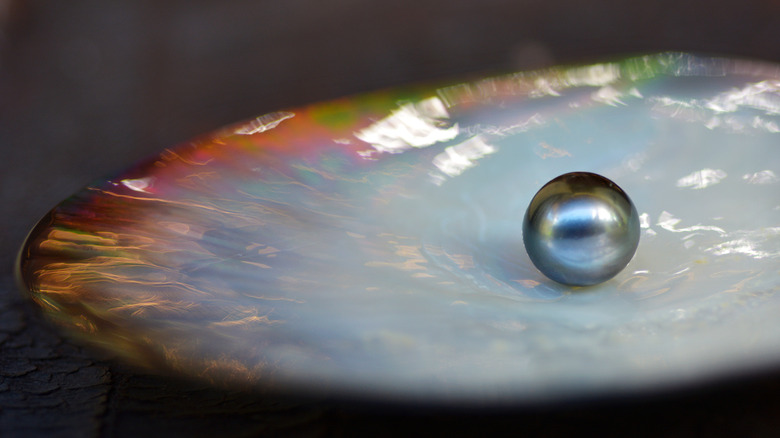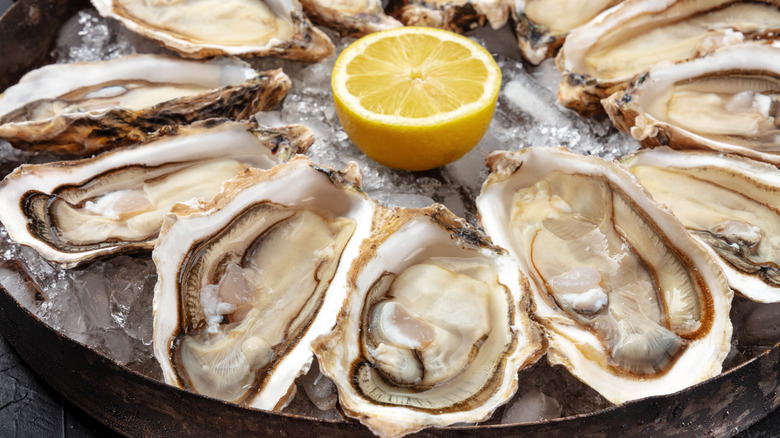Why It's Unlikely You'll Find A Pearl In Your Oysters
Pearls are widely considered to be one of the most precious gems in the world and, according to Cuttings Jeweller & Pawnbroker of London, are the only precious gems to be produced by a living thing – the oyster. Their uniqueness, scarcity, and natural luster makes them perfect for jewelry, and they've been used in all sorts of accessories from the classic and professional to the opulent and seductive. While pearls may be incredibly desirable, don't go thinking you're going to stumble across one the next time you get the chance to order Oysters Rockefeller. Pearl jewelry may be universal but all oysters are not created equal.
According to Business Insider, people have been harvesting and enjoying oysters as a meal since ancient Rome, though their popularity reached its peak about 200 years ago, with street vendors and bars in the UK and the US east coast selling them en masse as cheap snacks. However, the oysters that our ancestors were eating like French fries — which have since risen in price and scarcity due to overfishing, sanitation, and labor regulations — were still not providing them with a glut of pearls. That's because the oysters humans like to eat are generally not the same as the oysters that produce the jewels we like to wear around our necks.
There are different classes of oysters
When people say "oysters," there are actually two classes of mollusks that they think of: "true oysters" from the order Ostreidae and "pearl oysters" of the order Pteriidae (via New World Encyclopedia). While true oysters can make pearls, they are typically not gem quality, and pearl oysters tend to live deep in the ocean out of fishing range, according to Food Republic.
According to ThoughtCo, pearls are formed when an irritating substance, such as a grain of sand, gets lodged in an oyster's shell and irritates it. To protect itself, the oyster will secrete the same substance it uses to build its shell around the irritant, encasing it and making it smooth. This substance is the hard, lustrous, and colorful material people know as Mother of Pearl, and the coated irritants are the pearls used to make jewelry.
Although other mollusks, including muscles and clams, are capable of producing pearls, most are small and have no commercial value. This is because pearls which are too small, dull, or misshapen are not considered useful for jewelry (via Pearl-Lang).
This is not to say flukes don't happen! In 2018, the New York Post reported two people discovered pearls worth $200 to $400 in oysters served at New York restaurants within three weeks of each other. So while you can never say never, it's important to keep in mind that your odds of finding even a small pearl in your dinner are about 1 in 10,000.

